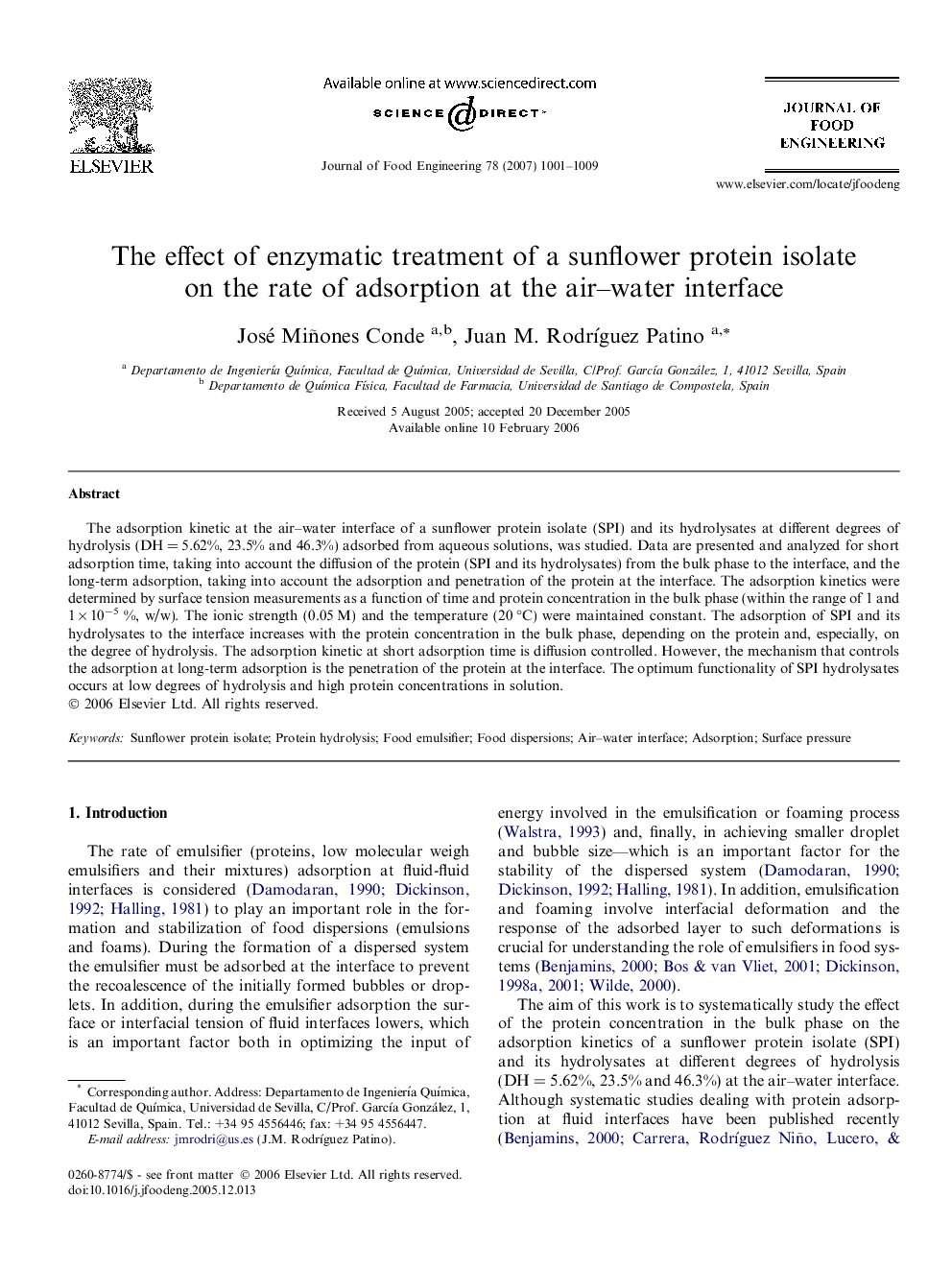| Article ID | Journal | Published Year | Pages | File Type |
|---|---|---|---|---|
| 225923 | Journal of Food Engineering | 2007 | 9 Pages |
The adsorption kinetic at the air–water interface of a sunflower protein isolate (SPI) and its hydrolysates at different degrees of hydrolysis (DH = 5.62%, 23.5% and 46.3%) adsorbed from aqueous solutions, was studied. Data are presented and analyzed for short adsorption time, taking into account the diffusion of the protein (SPI and its hydrolysates) from the bulk phase to the interface, and the long-term adsorption, taking into account the adsorption and penetration of the protein at the interface. The adsorption kinetics were determined by surface tension measurements as a function of time and protein concentration in the bulk phase (within the range of 1 and 1 × 10−5 %, w/w). The ionic strength (0.05 M) and the temperature (20 °C) were maintained constant. The adsorption of SPI and its hydrolysates to the interface increases with the protein concentration in the bulk phase, depending on the protein and, especially, on the degree of hydrolysis. The adsorption kinetic at short adsorption time is diffusion controlled. However, the mechanism that controls the adsorption at long-term adsorption is the penetration of the protein at the interface. The optimum functionality of SPI hydrolysates occurs at low degrees of hydrolysis and high protein concentrations in solution.
